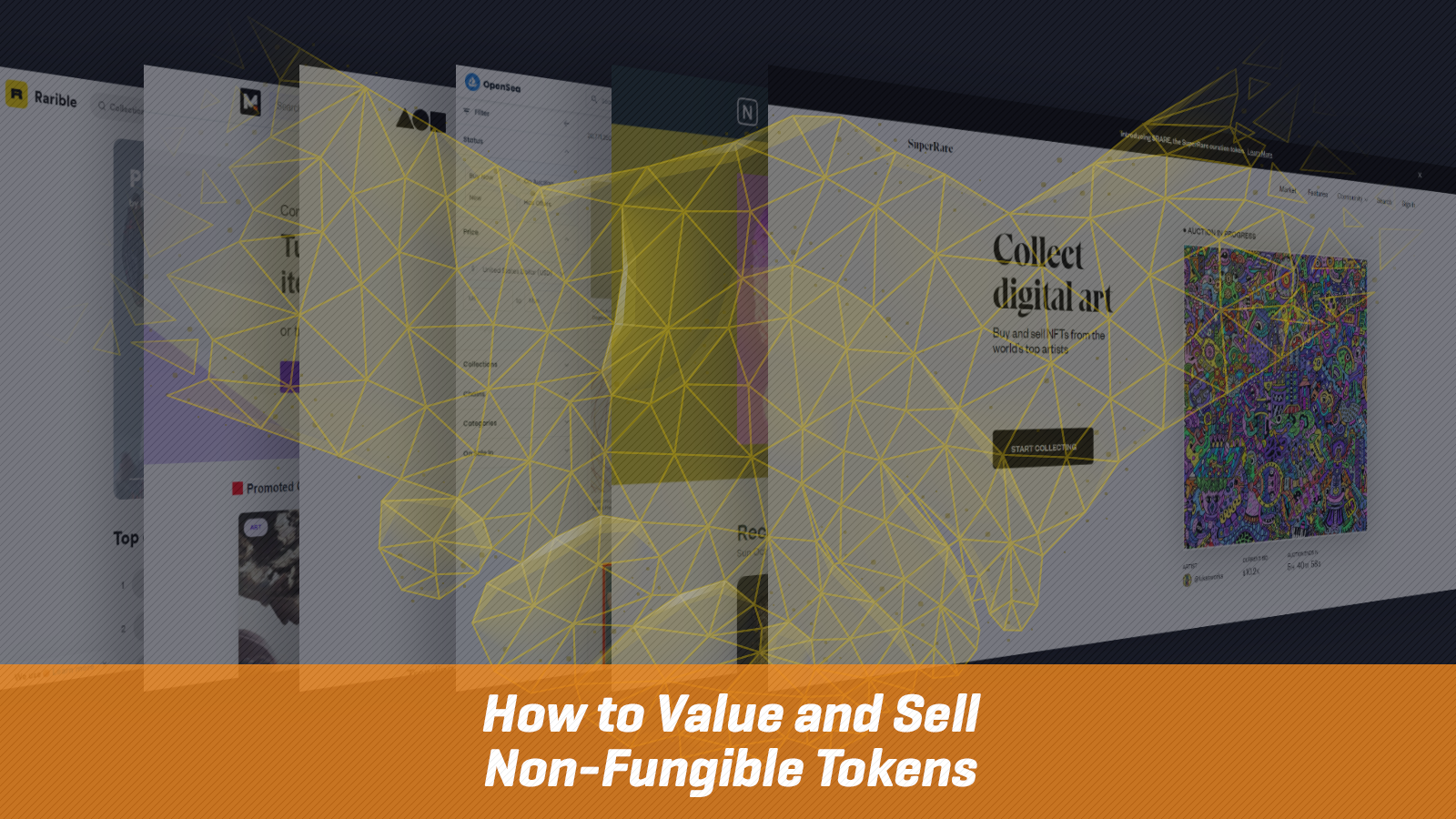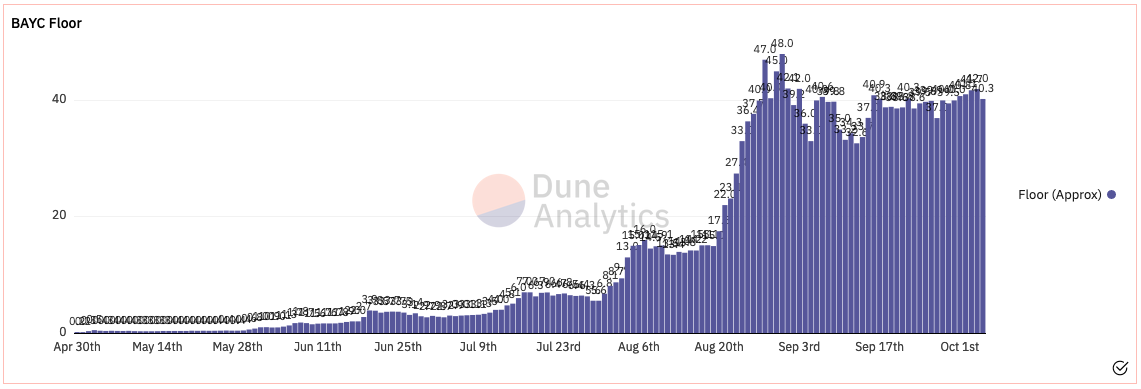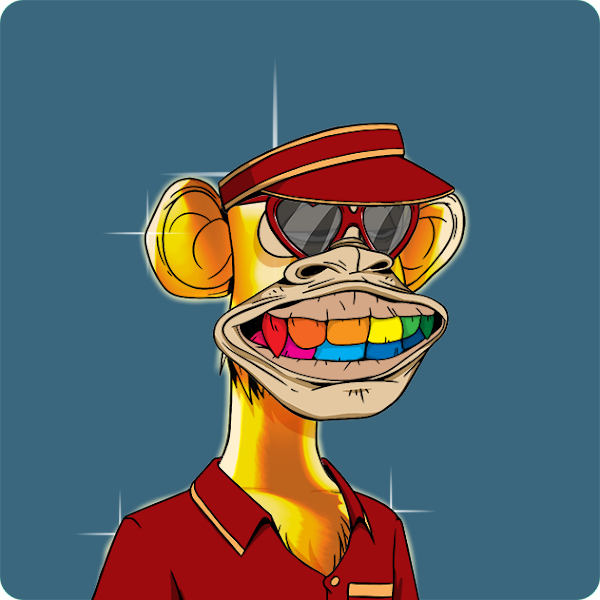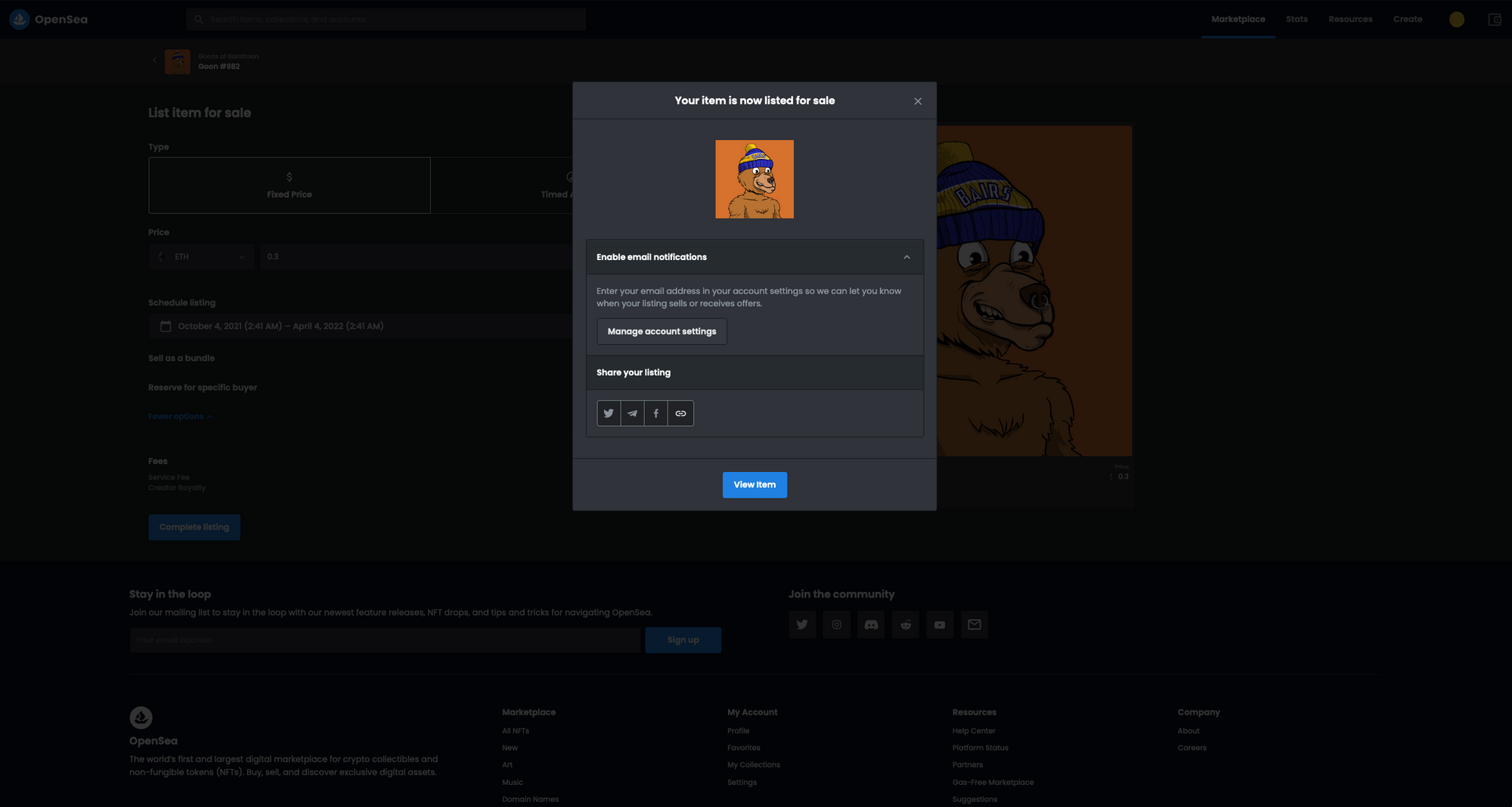How to Value and Sell Non-Fungible Tokens
We'll show you how to value Non-Fungible Tokens (NFTs) and set up a listing to sell NFTs on a marketplace.

In this guide, we'll show you how to value Non-Fungible Tokens (NFTs) and set up a listing to sell them on a marketplace.
In a previous article, we detailed how to buy and store NFTs using the MetaMask wallet. If you've won a NFT from one of our Rollboxes, you may be thinking 'how much is it worth?' and 'how can I sell it?'. We'll answer these questions for you in this post.
What is an NFT Worth?
Non-Fungible Tokens are unique and cannot be replaced, usually representing art (but can also represent other things such as music, in-game assets and utilities), where the holder has proof of ownership on the blockchain. Unlike physical works of art or collectibles, the scarcity, uniqueness and ownership of NFTs can be verified by anyone.
NFTs can become valuable for a variety of reasons:
- Historical significance: OG NFT projects like CryptoPunks and MoonCats are worth a lot more than other projects since they mark a significant moment in the history of internet culture, representing some of the first-ever collectibles on the Ethereum blockchain.
- Community aspect: NFTs can also provide membership to a club and offer you the chance to connect with like-minded people. With an active and growing community, the network effect of the collection increases as well as the value of individual NFTs, best illustrated by projects such as the Bored Ape Yacht Club (BAYC).
- Branding: For NFTs that are created by existing brands that already have a large user base, they are much more likely to become valuable. One example is NBA Top Shot, which leverages the popularity of the professional basketball league in the United States.
- Utility: certain NFTs provide some sort of utility, so they go beyond being a digital collectible and provide real-world value. Some good examples are Ethereum Name Service, Unstoppable Domains and, of course, our upcoming Rollbot NFT sale.
While there are both objective and subjective qualities that can make one NFT more valuable than another, there are a few approaches you can use to assess their worth.
What is the Floor Price?
The starting point for estimating the value of a NFT is the floor price, which naturally develops over time as these assets are traded on marketplaces. The floor price tells us the lowest price for a collection, giving us a useful reference point which is updated in real-time as sales occur.
Although each NFT is unique and has varying traits, the floor price tells us the lowest price you could sell the NFT for, as buyers are likely to scoop up any items at or near this price. It is worth keeping in mind that the floor price is not as useful for those collections that have distinct subsets.
When buying NFTs, you should always buy near the floor price and avoid going over it, since they can be easily sold near this price. Anywhere above the floor price, and it could become a lot more difficult to find a willing buyer.
The Bored Ape Yacht Club (BAYC) floor price is illustrated in the chart below. According to these estimates, if you want to purchase a BAYC, you should look to buy one for a price of 40.3 ETH (or below this price if you manage to find anything on offer). Similarly, if you want to sell a BAYC NFT, you should not list it for anything less than the floor price, which in this case is 40.3 ETH.

Source: https://dune.xyz/orieal/NFT-Floor-Prices
As well as being displayed on platforms like Dune Analytics, the floor price is also shown on NFT marketplaces via the collection's homepage.
Past, Present and Future Price Potential
Since ownership of a NFT is recorded on the blockchain, we can look at an individual item to see what price it was sold for in the past and at what price it could sell for right now. By examining past sales of the same item or similar items, we can arrive at a valuation based on these data points.
Marketplaces like OpenSea show all the historical sales associated with a NFT. For example, all the past sales for Bored Ape #819 (which is available as a Rollbox prize) are displayed in the video below, which shows a steady rise in the price over time:
Valuing NFTs by Traits/Rarity
Another way to value a particular NFT is to look at their traits and rarity.
For example, Bored Ape #7090 was recently sold for $2.25 million, with this Ape being just one of just 46 that possesses the golden fur trait. Out of all 10,000 Apes, Bored Ape #7090 is one of the rarest, so it commands a hefty premium over the floor price.

You can check the rarity and traits directly from the Rollbit website for NFTs you have won or are available as Rollbox prizes:
One of the important bits of data for any NFT is the ID number.
After selecting a collection on rarity.tools, you can copy over the ID number and then it will show you how rare the item is out of the entire collection. For example, with the Goons of Balatroon #982 NFT, we can go to rarity.tools, search the 'Goons of Balatroon' collection and enter the ID number (e.g., 982).
The results include how rare the NFT is out of the entire collection and the highest floor price broken down by each trait, which will help you decide how much to sell the NFT for based on the traits that matter most to the community.
Other than rarity.tools, there is a host of similar websites that can help you determine the rarity and the value of a particular NFT:
Now you know how to value NFTs, let's look at how you can withdraw them from Rollbit and sell them on a marketplace.
How to Withdraw NFTs from Rollbit
To withdraw an NFT, go to 'My NFTs' from the sidebar.
Select the NFT you want to withdraw and click on the three dots on the top right-hand side, then go to 'Withdraw'.
The network fee to withdraw is shown at the bottom. Enter your Ethereum address by copying it from MetaMask and enter your 2FA code, then click on 'Request Withdrawal'.
The network fee is deducted from your Rollbit account.
Once the transaction is confirmed, the NFT will be stored in your MetaMask wallet. However, it will not be visible in your wallet until you add the NFT's contract address (which can be obtained from EtherScan), as shown below:
After adding the token to MetaMask, the number of NFTs you own from that collection will be shown. So in this example, it shows 1 GOONS (but it doesn't display the dollar value of NFTs).
Once you have stored the NFT in your own address using MetaMask, since marketplaces like OpenSea connect to your wallet, your collection is displayed on your profile page. If you haven't yet connected your MetaMask with OpenSea, you'll have to sign a message before you can submit a listing.
How to Sell Your NFT Using a Marketplace
As part of our Rollbot NFT roadmap, we'll be releasing a marketplace where you can easily trade NFTs without the burden of expensive gas fees. Until our own Rollbit marketplace is ready (due to be launched following our NFT sale), you can use popular venues like OpenSea to sell your NFTs.
From your profile page, you can list your NFTs and put them up for sale. Click on the NFT you want to sell, then go to the 'Sell' button.
Choose between a fixed price or timed auction, then set the price in ETH and click 'Complete listing' to put the NFT up for sale.
To complete the listing, you'll have to interact with OpenSea's smart contract and initialise your wallet if it is your first sale on OpenSea. Your MetaMask wallet will open up and the one-time fee that's required will be shown (make sure you have enough ETH in MetaMask to cover the fees). Click on 'Confirm' to proceed.
After waiting for the transaction to be processed on the Ethereum blockchain, you'll also need to approve the token, which comes with another one-time fee. Again, click on 'Confirm' when MetaMask pops up and wait for confirmation.
After approving the token, you'll have to sign a message to confirm your listing. Click on 'Sign' when prompted by MetaMask, and your listing will then go live.
After it has been confirmed, you can view your NFT listing.

You can always cancel the listing or lower the price. However, cancelling the listing will require another transaction on the Ethereum network, which comes with a fee. From the listing page, you can also share it by copying the link or publishing it via social media.
After listing your NFT, you'll have to wait for a buyer, which may take some time. Buyers may also post offers, but as mentioned earlier, never sell below the floor price! Once your NFT has been bought, it will be transferred to the buyer's Ethereum address and you'll receive the proceeds (minus a small fee that goes to the marketplace).
If you have any other questions about the valuing or selling NFTs, let us know in our Discord server or via Twitter!
Our Rollbit-branded NFTs will be sold for a 50% discount in the presale versus the public sale and provide an array of utility benefits, including profit-sharing from our NFT marketplace. To take part in our upcoming Rollbot presale on October 14th, join our Discord, reach level 3 and invite at least 3 friends.
-The Rollbit team